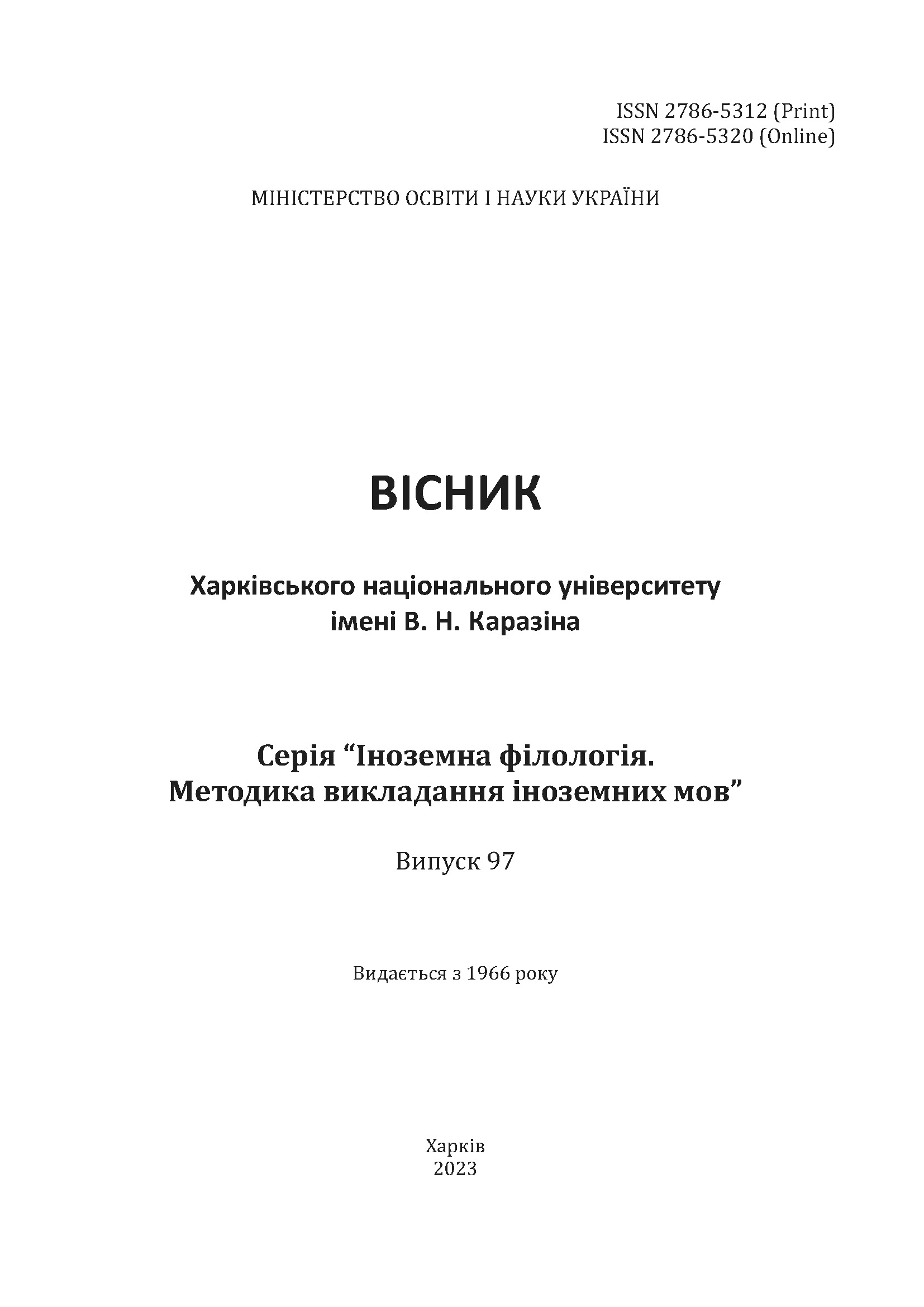Internet ads as a form of Internet communication. Specifics of translation. (based on the material of the Chinese and English languages)
Abstract
The aim of the article is to study specifics of Internet advertising as a communicative process in virtual discourse. The relevance of the chosen topic is determined by accelerated technological development, modification of Internet communication with the participation of the latest elements of technology and software, and the evolution of communication processes. The tasks of the research are to consider the theoretical origins of formation of Internet communication; to distinguish the concept of Internet advertising; to analyze the peculiarities of Internet advertising in the context of virtual discourse. The object of the article is Internet advertisements. The subject of the research is elements of translation and adaptation of Chinese and English texts of Internet advertisements in Ukrainian. The article examines the phenomenon of Internet advertising as a form of Internet communication. The theoretical origins of the formation of Internet communication are considered. A general overview of the characteristics of Internet communication is provided, namely, its cross-border nature, expressiveness, illustrativeness of texts, the use of a significant number of graphic elements in messages is examined. It is noted that in the communicative processes inherent in online communication, a widespread combination of oral and written forms of speech appears in order to further improve, modify and obtain new opportunities for the implementation of online forms of communication, which have become an integral part of life of modern society. The concept of Internet communication is defined as a modern communication process that has deeply entered life of society. The concept of Internet advertising is distinguished. It is noted that online advertising is a form of communication process used in cases of finding and selling a product, service or brand through channels determined by the virtual environment. The peculiarities of Internet advertisement as a small-form text that exists separately in virtual space are analyzed. The characteristics of Internet advertisement in the context of virtual discourse, its types and forms are studied.
Downloads
References
Kirichenko, E.A. (2012). Osobennosti Internet-kommunikacii kak novoj formy socializacii v sovremennom obshhestve. Mezhkul’turnaja kommunikacija: lingvisticheskij, social’nyj i medicinskij aspekty. Sumy. Ukraine.
Reklama v Interneti. Retrieved from: https://compas.agency/ru/blog/reklama-v-internete/
Alvesson, M., Coupland, N. (2000).Varieties of discourse: On the study of organizations through discourse analysis. 53rd ed. Human Relations.
Bauer, C. (2014). Adaptation strategies to increase advertisement effectiveness in digital media. Management Review Quarterly.
Bell R. T. (1991). Translation and translating: Theory and practice. London. Longman.
Carry, J. (1988). Communication as culture. London. Routledge.
Chaturvedi, D. (2020). Internet Communications: What is it & Ways to communicate over the Internet. LinkedIn. Retrieved from: https://www.linkedin.com/pulse/internet-communications-what-ways-communicate-over-diwakar-chaturvedi.
Coetzee, L., Eksteen, J. (2011). The Internet of Things - promise for the future? An introduction. 2011 IST-Africa Conference Proceedings.
Darbelnet J., Viney J.-P. (2000). Comparative Stylistics of French and English: A Methodology for Translation.
Elleuch M.(2014). The Literal Translation of English Advertising Slogans into Arabic and the Loss of the Originally Intended Effects. Tunisia.
Jaworski, A., Coupland, N. (1999). Introduction: Perspectives on discourse analysis. The discourse reader.
Johnson, S., Bettenhausen, K., Gibbons, E. (2009). Realities of Working in Virtual Teams: Affective and Attitudinal Outcomes of Using Computer-Mediated Communication.
Hatim, B. (2004). Translation: An advanced resource book. London..
Kirkman, B. L., Mathieu, J. E. (2005). The dimensions and antecedents of team virtuality. Journal of Management.
Lörscher W. (1991). Translation performance, translation process, and translation strategies: A psycholinguistic investigation. Tübingen.
Martins, L. L., Gilson, L. L., Maynard, M. T. (2004). Virtual teams: What do we know and where do we go from here? Journal of Management.
Nordquist, R. (2019). Learn the Art of Communication and See How It’s Used Effectively. ThoughtCo. Retrieved from: https://www.thoughtco.com/what-is-communication-1689877
Thurlow, C. (2003). Generation Txt? The sociolinguistics of young people’s text-messaging.




